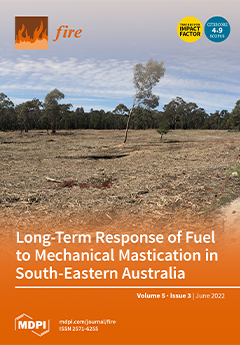Open AccessArticle
Forest Fragmentation and Fires in the Eastern Brazilian Amazon–Maranhão State, Brazil
by
Celso H. L. Silva-Junior, Arisson T. M. Buna, Denilson S. Bezerra, Ozeas S. Costa, Jr., Adriano L. Santos, Lidielze O. D. Basson, André L. S. Santos, Swanni T. Alvarado, Catherine T. Almeida, Ana T. G. Freire, Guillaume X. Rousseau, Danielle Celentano, Fabricio B. Silva, Maria S. S. Pinheiro, Silvana Amaral, Milton Kampel, Laura B. Vedovato, Liana O. Anderson and Luiz E. O. C. Aragão
Cited by 14 | Viewed by 5468
Abstract
Tropical forests provide essential environmental services to human well-being. In the world, Brazil has the largest continuous area of these forests. However, in the state of Maranhão, in the eastern Amazon, only 24% of the original forest cover remains. We integrated and analyzed
[...] Read more.
Tropical forests provide essential environmental services to human well-being. In the world, Brazil has the largest continuous area of these forests. However, in the state of Maranhão, in the eastern Amazon, only 24% of the original forest cover remains. We integrated and analyzed active fires, burned area, land use and land cover, rainfall, and surface temperature datasets to understand forest fragmentation and forest fire dynamics from a remote sensing approach. We found that forest cover in the Maranhão Amazon region had a net reduction of 31,302 km
2 between 1985 and 2017, with 63% of losses occurring in forest core areas. Forest edges extent was reduced by 38%, while the size of isolated forest patches increased by 239%. Forest fires impacted, on average, around 1031 ± 695 km
2 year
−1 of forest edges between 2003 and 2017, the equivalent of 60% of the total burned forest in this period. Our results demonstrated that forest fragmentation is an important factor controlling temporal and spatial variability of forest fires in the eastern Amazon region. Thus, both directly and indirectly, forest fragmentation can compromise biodiversity and carbon stocks in this Amazon region.
Full article
►▼
Show Figures





